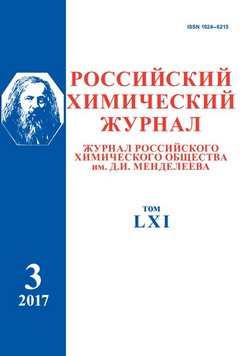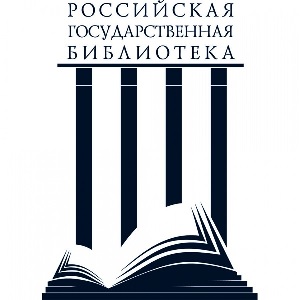ФИТОСТЕРОЛЫ В РАСТЕНИЯХ РОДА PLANTAGO L. СТЕПНОЙ ЗОНЫ УРАЛА
Аннотация
В статье авторы приводят результаты поиска источников природных стеролов в составе этанольных экстрактов дикорастущих растений рода Plantago (семейство Plantaginaceae), произрастающих в степной зоне на территории Южного Урала. Методом газовой хроматомасс-спектрометрии с использованием газового хроматографа марки “Agilent 7890A” с масс-спектрометром “Agilent 5975C” (США) систостерол был обнаружен в сырье (лист) видов рода подорожник (Plantago L.) – подорожнике наибольшем (P. maxima Juss. ex Jacq.), подорожнике большом (P. major L.), подорожнике ланцетном (P. lanceolata L.) и подорожнике степном (P. stepposa Kupr.). Стигмастерол и кампестерол указанным методом не были обнаружены. Среди видов рода Plantago лидирует по содержанию систостерола Plantago major далее в ряду убывания располагается виды: P. maxima, P. lanceolata, P. stepposa. Присутствие ситостерола в сырье Plantaginaceae объясняет некоторые виды фармакологического действия препаратов свежих листьев Plantago, описанные в многочисленных литературных источниках. Растения семейства Plantaginaceae широко применяются в различных странах мира в для производства лечебных и лечебно-профилактических препаратов, биологически активных добавок, пищевых добавок и кормов, а так же как добавка к косметической продукции. Известно, что условия в месте произрастания приводят к значительным различиям качественных и количественных показателей содержания биологически активных веществ и микроэлементов в составе лекарственного растительного сырья. Наличие фитостеролов в исследуемом сырье растений семейства Plantaginaceae следует учитывать при организации производства лечебно-профилатических препаратов, продуктов питания и косметики, а также при использовании в сельском хозяйстве
Литература
Marcone M.F., Kakuda Y., Yada R.Y. Amaranth as a rich di-etary source of β-sitosterol and other phytosterols. Plant foods for human nutrition. 2003. V. 58. N 3. P. 207–211.
Weihrauch J.L., Gardner J.M. Sterol content of foods of plant origin. Journal of the American Dietetic Association. 1978. V. 73. N 1. P. 39–47.
Kuzmenko A.N. The use of gas-liquid chromatography for standardization of medicinal plant raw materials and dosage forms based on it. Russian Chemical Journal. 2010. V. 54. N 6. P. 114-119.
Sosnina S.A. Comparative pharmacognostic study, standard-ization of raw materials and phytopreparations of Plantago L. species 2009. P. 3-6.
Nemereshina O.N., Gusev N.F., Malkova T. L. Study of bio-logically active substances and antimicrobial activity of plan-tain leaves Lanceolate Plantago lanceolata. Bashkir Chemi-cal Journal. 2014. V. 21. N 4.
Nemereshina O.N., Gusev N.F. Biologically active sub-stances and anti-microbial effects of Plantago maxima. Biopharmaceutical Journal. 2015. V. 7. N 3. P. 10–16.
Tinkov A.A. Plantago maxima leaves extract inhibits adipo-genic action of a high-fat diet in female Wistar rats. European journal of nutrition. 2014. V. 53. N 3. P. 831–842.
Piironen V. Plant sterols in vegetables, fruits and berries. Journal of the Science of Food and Agriculture. 2003. V. 83. N 4. P. 330–337.
Moreau R.A., Whitaker B.D., Hicks K.B. Phytosterols, phy-tostanols, and their conjugates in foods: structural diversity, quantitative analysis, and health-promoting uses. Progress in lipid research. 2002. V. 41. N 6. P. 457–500.
Lee C., Farrington J.W., Gagosian R.B. Sterol geochemistry of sediments from the western North Atlantic Ocean and ad-jacent coastal areas. Geochimica et Cosmochimica Acta. 1979. V. 43. N 1. P. 35-46.
Pollak O.J. Successful prevention of experimental hypercho-lesteremia and cholesterol atherosclerosis in the rabbit. Cir-culation. 1953. V. 7. N 5. P. 696–701.
de Jong A., Plat J., Mensink R.P. Metabolic effects of plant sterols and stanols. The Journal of Nutritional Biochemistry. 2003. V. 14. N 7. P. 362–369.
Berger A., Jones P. J.H., Abumweis S.S. Plant sterols: factors affecting their efficacy and safety as functional food ingredi-ents. Lipids in health and disease. 2004. V. 3. N 1. 5 p.
Ryan E. Phytosterol, squalene, tocopherol content and fatty acid profile of selected seeds, grains, and legumes. Plant Foods for Human Nutrition. 2007. V. 62. N 3. P. 85–91.
Andersson S.W. Intake of dietary plant sterols is inversely related to serum cholesterol concentration in men and women in the EPIC Norfolk population: a cross-sectional study. European journal of clinical nutrition. 2004. V. 58. N 10. P. 1378.
Yadav P. β-sitosterol in Various Pathological Conditions: An Update. Current Bioactive Compounds. 2022. V. 18. N 6. P. 19–27.
Khan Z. Multifunctional roles and pharmacological potential of β-sitosterol: Emerging evidence toward clinical applications. Chemico-Biological Interactions. 2022. P. 110117.
Perova N.V. Possibilities and effects of the use of plant stanols esters in non-drug prevention of cardiovascular dis-eases caused by atherosclerosis. Cardiovascular therapy and prevention. 2018. V. 5. N 6. P. 108-115.
Ostlund Jr R.E. Phytosterols that are naturally present in commercial corn oil significantly reduce cholesterol absorp-tion in humans. The American journal of clinical nutrition. 2002. V. 75. N 6. P. 1000–1004.
Normén A.L. Plant sterol intakes and colorectal cancer risk in the Netherlands Cohort Study on Diet and Cancer. The American journal of clinical nutrition. 2001. V. 74. N 1. P. 141–148.
Moshkova L.V., Korzhavykh E.A. Methodology of research in the field of creation of new medicinal preparations. Russian Chemical Journal. 2010. V. 54. N. 6. P. 45–52.













